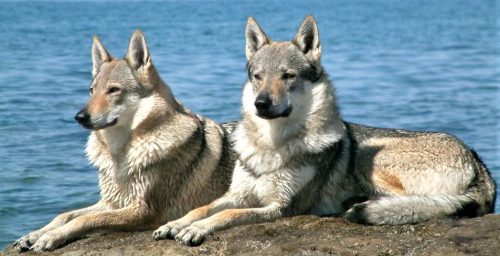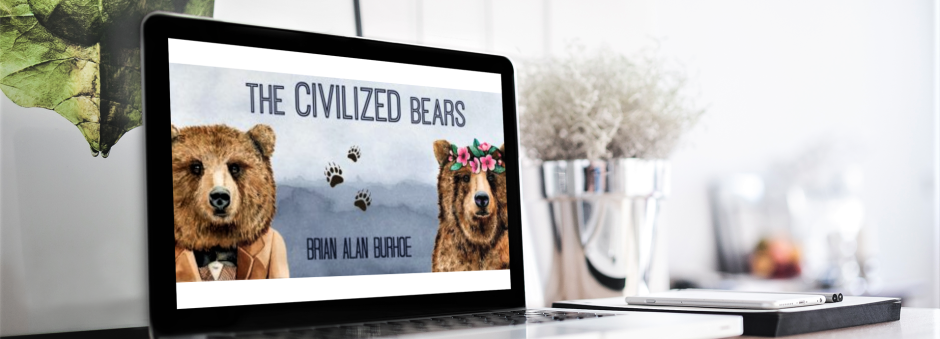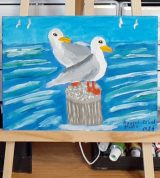Species Extinction – Then & Now…

Species Extinction: Extinct Animals & Endangered Species in UK
There was a time when wolves haunted the deep English forests.
The number of species that have disappeared on Humankind’s Watch just keeps on growing. The recent announcement in Canada that the Eskimo Curlew is now “officially” extinct is just the latest.
And it saddens us. Well, “sadden” doesn’t even begin to describe it, does it?
One of the first species to disappear because of Human action was the Cave Bear (Ursus spelaeus) — we wanted those caves and the original gentle giant of the Pleistocene disappeared around 25,500 BC. [1]
And, my friend, that was just the beginning.
Here, from Marcus Finch, is a guest blog looking at the natural history of species extinction in the United Kingdom… a reminder of why we must get involved with Animal Rights and protecting the environment.
Species Extinction: Extinct Animals Of The British Isles
Our Wildlife does need caring for. Without our help many of these animals will go extinct like many have before and this is not good. This is why everyone needs to provide food and drink for the wildlife so that they can get by and live for as long as we do.
A number of different kinds of mammals has been decreasing for thousands of years — many of which most people have never heard of — and some that are still around today in other parts of the world. For example, the Walrus used to roam about the British Isles up until 1000 BC, when the ice age began to end it became extinct to the areas around the British Isles.
A species now completely extinct is the Woolly Rhinoceros, which generally roamed around southern England. Then in 10,000 BC disappeared from the British Isles and the rest of our Earth.
Other animals that have become extinct in the British Isles are:
The Arctic Lemming (8000 BC), the Aurochs (1000 BC), the Breech Marten (19th Century), the Brown Bear (1000 AD), the Coypu (1987), the elk (1500 BC). The Eurasian Lynx (400 AD), the grey Whale (500 BC), the Grey Wolf (1680), the Irish Elk (6000 BC), the Narrow Headed Vole (8000 BC). The Pika (8000 BC), the root Vole (1500 BC), the Steppe Lemming (8000 BC), the Tarpan, or Eurasian wild horse (7000 BC), the Wisent, or European Bison (3000 BC). The Wolverine (6000 BC) and the Woolly Mammoth (10,000 BC).
Although not many birds have suffered from species extinction in the British Isles it’s still important to make sure the birds that are remaining are fed properly as some are close to extinction.
One bird that has gone extinct here is the Great White Pelican which disappeared in 1000 BC — although this animal is still living elsewhere in the world, which means the British Isles do not have the ability to look after this bird.
The other bird that went extinct here is the penguin-like Great Auk, which went in 1844 and is now extinct worldwide.
Not many fish have gone extinct in the British Isles. But if mass fishing continues how it there will be problems that face many species of fish. One fish that did go extinct of our shores is the Burbot. Reported as extinct here as recently as 1972, this fish still swims the waters elsewhere in the world.
This has left many people wondering why the fish cannot live in the waters around Great Britain. This may be because of the cold waters that surround us. A fish that has gone completely extinct is the Hounting and these went extinct in 1940 due to extensive fishing.
Like fish and birds reptiles have not really suffered from species extinction but with many ponds being filled in many reptiles like frogs could go extinct. This is proven by the fact that the only reptiles that have gone extinct are frogs. These frogs are the Agile Frog and the Moor frog and both went extinct in 1000 BP. [2]
Many reptiles have survived with only one knowingly going extinct on the shores of the British Isles.
The only reptile that has gone extinct is the European Pond Terrapin which went extinct in 5000 BP. This animal still roams the earth and is a species of turtle that no longer lives in the British isles.
Beetles have been increasingly going extinct with all of them doing so in the past 200 years. This raises issues about why they cannot cope with our environment in recent history.
The beetles that have gone extinct are: the Agonum Sahlbergi (1914), the Blue Stag Beetle (1800s), Graphoderus Bilineatus (1906), Harpalus Honestus (1905), the Horned Dung beetle (1957), the Ochthebius Aeneus (1913), the Platydema Voilaceum(1957), the Rhantus Aberratus (1904), Scybalicous Oblongiusculus (1926) and the Teretrius Fabricii (1907).
The trend that formed with the beetles is the same with butterflies, wasps, bees and flies with all of the extinctions for the species happening within the past 200 years. This is frightening!
The reason they are going extinct has a lot to do with pollution. This is why everyone needs to do there bit to reduce their carbon footprint to help stop the rising temperatures around the earth as well as to save the animals that are at risk.
Species Extinction: Animals at Risk of Extinction in the UK Today
Just as many species are at risk of annihilation today.
Mammals are suffering a lot with many of them threatened to join the Extinction List. This is down to the harsh environment that surrounds us. The Bottlenose Dolphin is at risk of going extinct from the waters near the UK leaving these beautiful creatures everywhere else in the world. The reason the dolphins cant live around our shores is down to the cold seas that have decreased in temperature.
These animals prefer warm and temperate waters. Another well-known mammal that is at risk is the cute Red Squirrel the numbers of these have declined drastically and there are many reasons for this. On reason is the introduction of the grey squirrel which has left them fighting to have the food they normally have so many of these starve to death. Food is the main problem for this creature so by leaving food in your garden you can help them survive.
Species Extinction: Extinct Animals & Endangered Species in UK
Other mammals at risk include the European Hare, the Hazel Dormouse (which some people keep as a pet), the European Otter, the Greater Horseshoe Bat, the Harbour Porpoise and the water vole. There are other mammals that are near to going on this list which is why change needs to happen.
Birds are facing a similar fate as many of species of birds cannot survive anymore. This is partly down to the fact they choose not to migrate and this leaves them to fight the increasingly harsh winters. Whilst trying to survive many struggle to find food and water due to frozen ground and ponds respectively.
Other birds that are at risk include: the Aquatic Warbler, the Capercaillie, the Corncrake, the Eurasian Wryneck, the Great Bittern, the Grey partridge, the Red-backed Shrike and the Skylark. All of these birds need all the help they can get.
Reptiles are also facing a similar fate to their mammal and bird counterparts and this is down to habitats being destroyed. The habitats need to be left so that the reptiles have somewhere to live because of these cause no harm what so ever.
The Grass Snake is a well-known animal that is on this list and this is down to a huge reduction in grassland and people often kill these animals when they see them. They may look dangerous but in fact they are completely harmless.
The slow-worm is another harmless snake that causes no harm yet they are left to suffer without a place to live. Other reptiles that are facing extinction include the Sand lizard, the Common lizard, the Northern adder and the smooth snake. Many reptiles have already gone extinct and at this rate all of them will soon be left extinct. To solve this habitats need to be left alone.
Amphibians and fish are in at risk as well although in not as many numbers they still face many problems.
The Great crested Newt is a protected species but due to ponds being filled in their natural habitat is being destroyed which leaves them with nowhere to go. This is the same for the Natterjack Toad which is having its habitat destroyed as parents are being over protective by filling these ponds in.
If a neighbour has a great rested newt in their garden the pond cannot legally be filled in.
Fish that face extinction are the Allis Shad, the Twaite shad, the Vendace and the Gwyniad. These animals go extinct because of the polluted water and the extensive fishing that happens. The animals need to be given enough time to breed so their numbers can increase.
Insects, beetles, butterflies and bees all face extinction as well due to their habitats being destroyed and them being killed. This needs to stop that we can still have a wildlife otherwise we will be left without one.
“Live Free, Mon Ami!” – Brian Alan Burhoe
[1] A third species fighting for possession of those Northern caves were Cave Hyenas, who lost the three sided war before the bears did.
[2] “BP” is basically an approximation of an animal’s age and this is figured out with a formula established in 1954, when scientists picked 1950 as the origin year for the BP Scale for use with radiocarbon dating.
Marcus Finch needed some assistance when he wrote this article, so he used the expertise of GardenBird.co.uk, an online provider of items such as a cheap bird feeder. This helped him write his article to its fullest potential.
Species Extinction: Extinct Animals & Endangered Species in UK
Keywords: animal rights, bears, endangered species, mass extinction, species extinction, what is extinction, wolves












